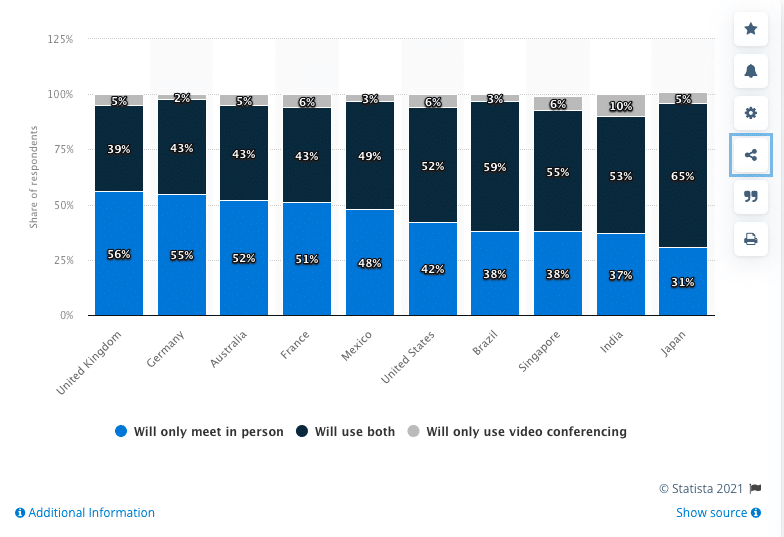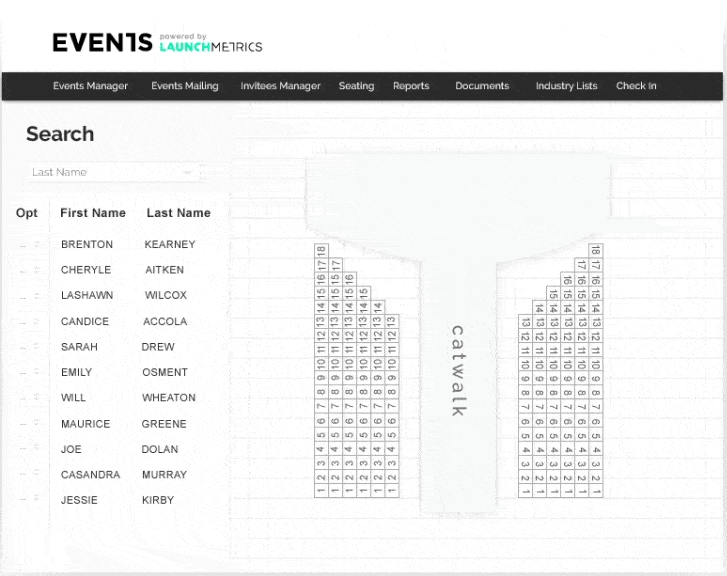We all know how critical 2020 was for the industry due to the Covid-19 pandemic. Thousands of campaigns had to be delayed or canceled, physical stores were closed for months and of course, many physical events and Fashion Weeks had to be suspended. And since then event management has been a near-impossible task for many PR and marketing departments.
But at the same time that all this was happening, the door was opened to virtual events. The sector started to investigate and experiment with all the possibilities of this format, which until then had been a simple complement to the physical setting. Launchmetrics was a strategic partner of the Féderation de la Haute Couture et de la Mode in Paris, to ensure that Paris Couture and Men's Fashion Weeks were still held, even if it was in a virtual format in June 2020.
And a very representative piece of data showing the rising interest that virtual events have had can be observed in the growth of G2 reviews in the category of virtual events platforms that have increased more than 2,700% since May 2020:
In this article you’ll learn…
Reopening the doors to phy-gital event management
During the last season presented in June we could see the Italian brand Armani returning to the live show; also Valentino and Saint Laurent returning to their first physical events after the pandemic. And most of the Fashion Weeks this season plan to have physical shows combined with a series of digital content released on their online platforms.
"I don’t think that the solution is to rely entirely on digital… Fashion Week is a fundamental social occasion for the sector… It must remain a network that brings together the big and the small, and offer them all, at the same time, the possibility to present their work."
Giorgio Armani, March 2021
And the reality is that the industry has seen that physical events are necessary, even with very limited and small audiences. So, what are the main challenges we face in organizing physical events today?
- Physical, but reduced. As previously mentioned, this is a reality. The many restrictions that exist in cities around the world (social distance, masks, ventilation, etc.) make events only possible with a very small number of attendees at the moment. But if there is something that we have learned in the last year, it is that digital platforms can be a very powerful tool to amplify these events, maximizing their impact and making them reach audiences all around the world, regardless of physical restrictions.
- Find the right technological allies. Being online to extend the impact of your physical events does not only mean having an account on Instagram or Facebook and publishing on social networks. Organizing a live virtual broadcast will require proper logistics. You will also need tools to measure cross-channel, cross-Voice and cross-market impact as in the same way you track the effectiveness of physical events with the percentage of final attendance, and for online you will need to understand perfectly the performance of your 360 degree strategies.
- The safety of your guests at physical events is more important than ever. Organizing small physical events will give your shows a unique exclusivity value, however, your attendees should feel comfortable and safe. As regardless of the restrictions in different cities, each person has a very different sensitivity following the pandemic that you will need to consider. Therefore, now more than ever, you can NOT afford organizational or logistics errors.
For all these reasons and elements, there are tools and technology that can help you manage and maintain control in a seamless way.
3 ways to offer your guests a safe experience at physical events
Secure contactless entry to your shows
The era of paper invitations and hand-to-hand exchanges at the entrance to the show is over. After the pandemic, it is important to avoid all these manual processes for the safety and hygiene of your guests. Barcodes or RFID technology can help you generate a much more fluid experience at the check-in of your events. Imagine that your guests only have to access with a barcode on their mobile phones that is easily scanned by the staff of your brand. Or that the same paper invitations, incorporate a hidden RFID tag: simply by carrying their invitation, the antennas at the entrance to your show would automatically register the guest. No contact, no exchanges, and everything remains safe.
A seating plan and automatic seat assignment
Another tedious and manual process of a physical event is usually the allocation of seats. Having one or more people dedicated to this step, using a printed seating plan that is passed from one hand to the other for a reduced audience and at a time when social distance prevails, is not optimal.
By digitizing your entry process to the show, you can also automate many things such as seat assignment. Imagine that your guests, as soon as they go through the event check-in, received the row and specific location of their seat on their mobile phone - much faster and more effective right?
Campaign materials or immediate collection distribution via email
We all know the surprises or last minute changes that an event or show can bring. Sometimes the start of the show needs to be delayed a few minutes, or other times for the post-show cocktail there is a change of access, etc. So having a digital system with all your registered attendees updated in real time will allow you to send immediate communications at any time to those contacts so that they receive it on their mobile phones right away.
You don't need to worry about managing face to face, or having a PR assistant chase them down. With a couple of clicks you will be able to communicate with them and send through the necessary information.
But also, keep in mind that with an event management tool you could schedule the distribution of your collection assets as soon as the show ends (images of each style, collection details, press contacts …) and even connect this email communication with a virtual showroom through which your guests will be able to request samples.

As you have seen, physical events are still possible despite the restrictions due to the pandemic. And you will be able to safeguard the safety of your guests thanks to digitizing some processes that were previously manual.

Also with a high percentage of professionals stating that they still have an interest in attending events physically or phy-gitally according to Statista, it will be vital to take all these elements into account.


